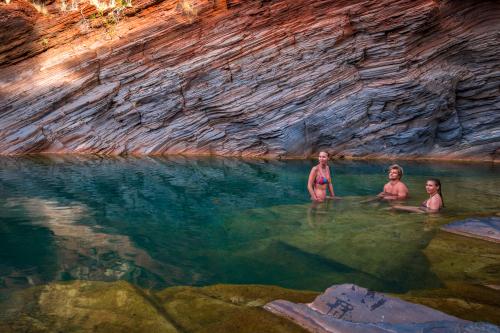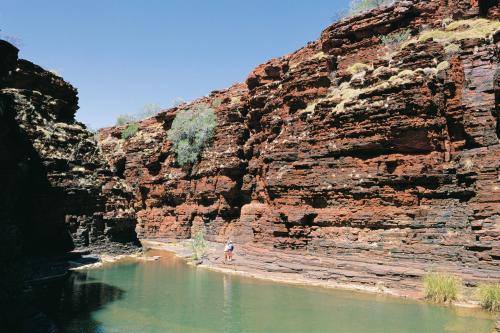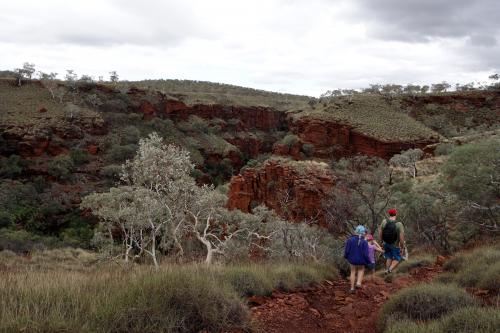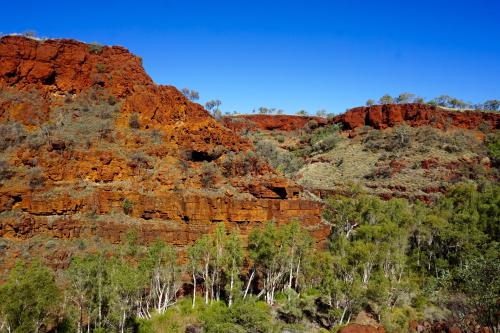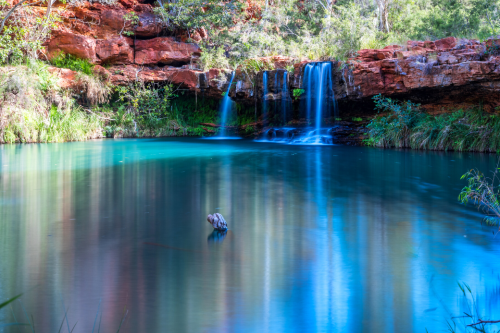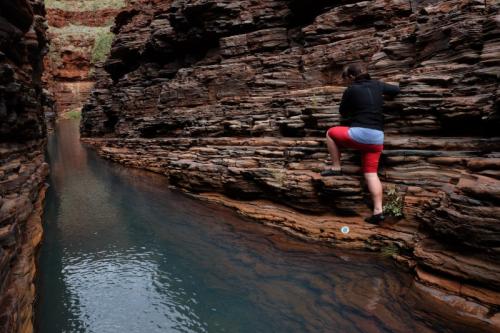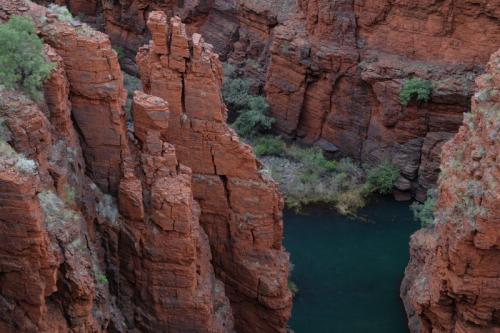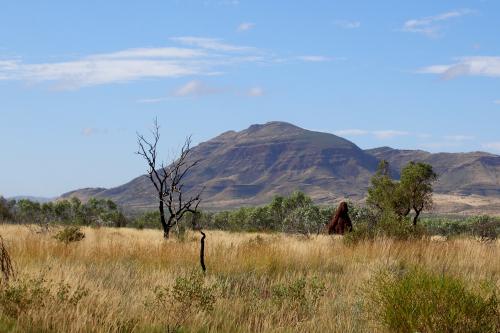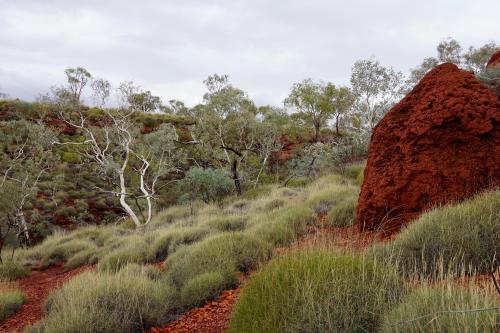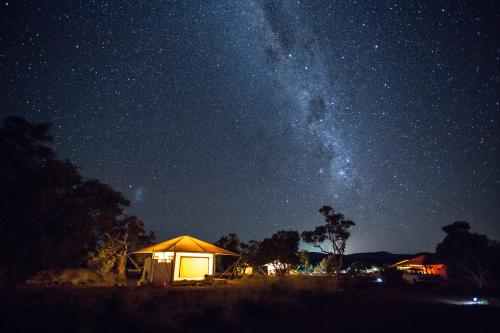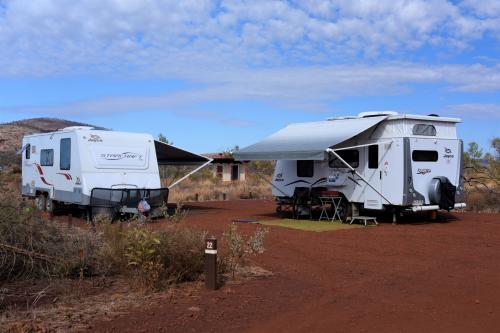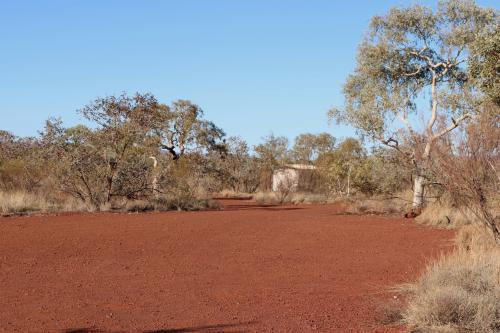About this park
Take a journey back in time to discover Western Australia’s second largest national park. Erosion has slowly carved this stunning red landscape out of rock that is over 2.5 billion years old.
Before you start to explore this ancient part of the planet, stop in at the Karijini Visitor Centre where locals can advise you of the best places to see and things to do.
Wander down into ancient deep gorges of layered red rock and swim through crystal-clear waters. We are sure you’ll ‘waterfall’ in love with the freshwater falls and secluded swimming holes surrounded by lush green ferns.
To get the most out of your experience we recommend staying a couple of nights. Set up camp and as the sun goes down, get lost in a sky full of stars. If you prefer a comfier stay, go glamping at the Karijini Eco Retreat. They also offer guided adventure tours.
After the rains, see the landscape covered in yellow flowering cassias and wattles, northern bluebells and purple mulla-mullas.
Look for the large termite mounds scattered throughout the grasslands as well as a variety of birds, rock wallabies, echidnas, red kangaroos, goannas, dragons and snakes.
Review - The best National Park I've been to.
An amazing national park with fantastic gorge hikes of varying levels. Especially loved the level 5 ones. The clear water in the natural pools is perfect for a nice swim after hiking. The landscape of this park is out of this world. I'd return there again and again. Trip Advisor - Steph Kloeckener
Safety information
Plan when to visit. Read this safety information about bushwalking and swimming . Consider traveling with a personal location beacon (PLB). In the event you need to be rescued it could save your life!
- Blue asbestos is present in Yampire and Wittenoom Gorges. Asbestos dust may cause cancer if inhaled.
- Stay back from cliff edges – they are about 100m high, often with loose rocks near the edge.
- Flash floods can occur – do not enter gorges if there is rain in the area. If it starts raining when you are in a gorge, leave immediately.
- The water in gorge pools can be extremely cold, especially between April and September; hypothermia can occur. Do not dive or jump into water.
- During summer, temperatures frequently top 40°C. Drink plenty of water at all times.
- Dingoes are common around Dales Campground. They may scavenge for food and can be aggressive. Do not feed dingoes, supervise children at all times, walk in groups and store food in your vehicle. Read more in the Be Dingo Aware fact sheet.
Gallery
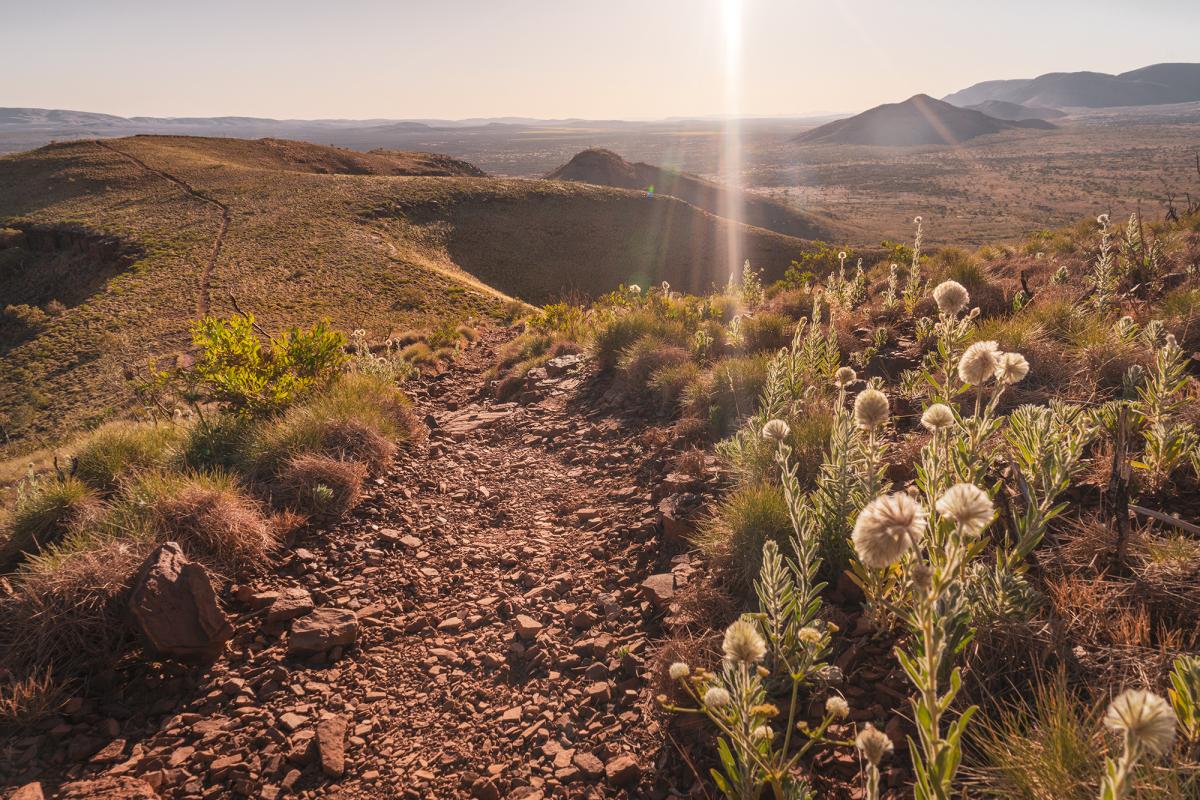


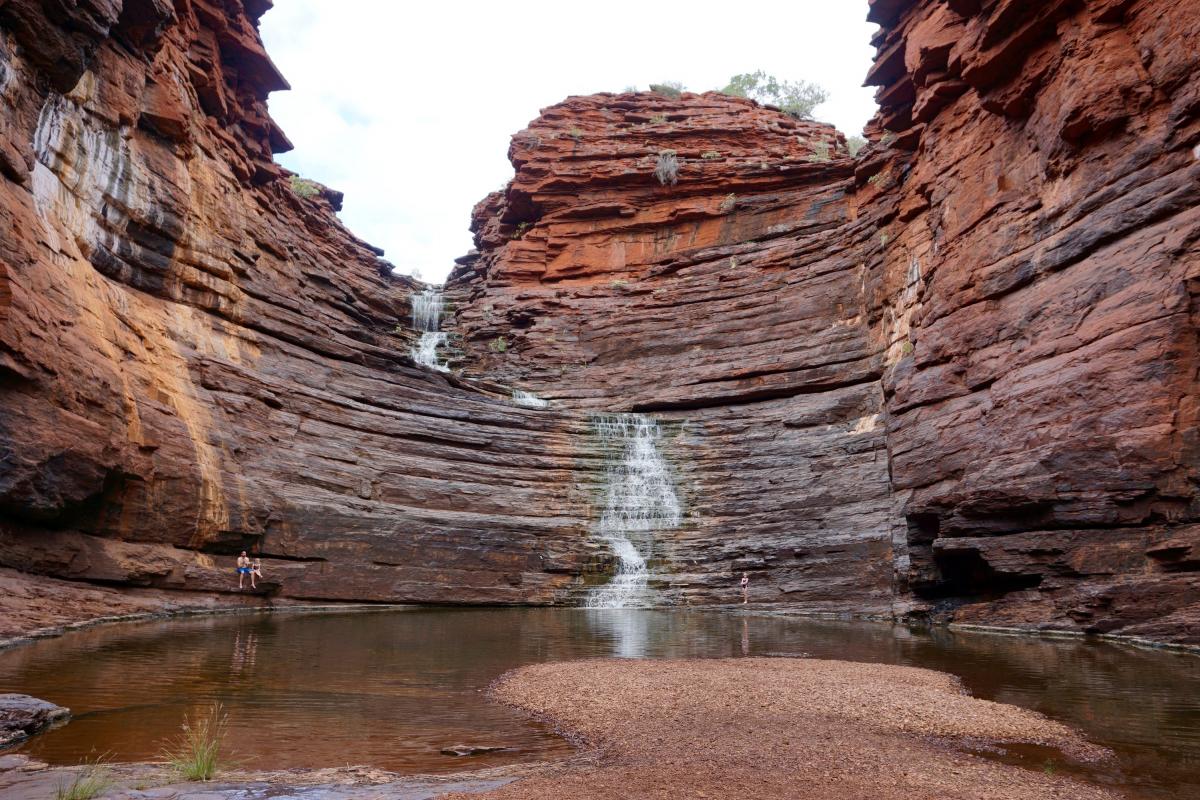
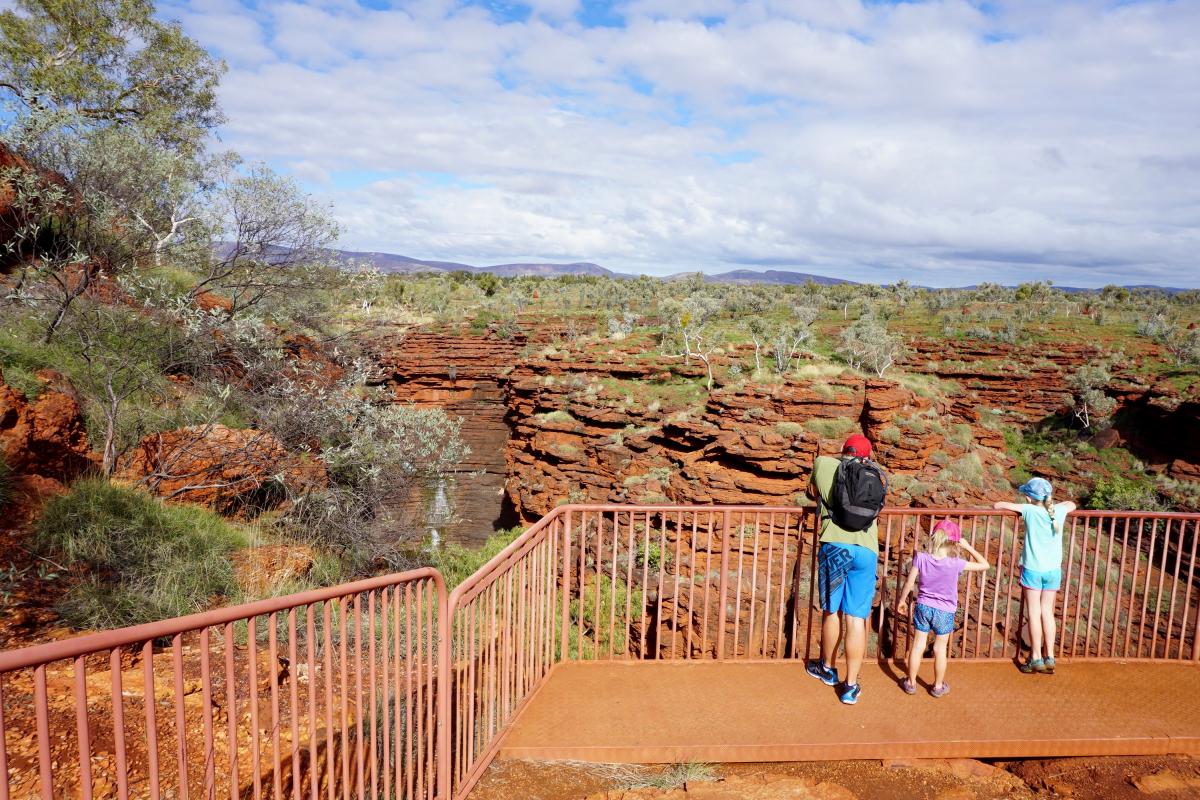

Smartreka maps
Smartreka Maps, by WA Parks Foundation, make it easier for you to navigate your way around some of Western Australia's national parks.
Before you go, download geo-referenced maps of Karijini National Park to your mobile device and locate yourself in the park without the internet. Download the Avenza Maps app from the App Store or Google Play.
Please note: The app is free to use, and many maps are available at no cost. Some maps may incur a fee which is set by the WA Parks Foundation. All proceeds from these purchases directly support the work of the WA Parks Foundation.
Every kid in a park
The Every Kid in a Park project, by Nature Play WA, connects kids with WA's greatest assets - the amazing outdoors!
It supports families of children of all abilities in accessing and enjoying local parks, nature reserves, beaches, and national parks all around Western Australia with free resources such as an app, an activity booklet and much more.
Discover family resources for exploring Karijini National Park at Nature Play WA.
Karijini National Park Improvement Project
To ensure visitors can continue to experience and enjoy the park, some improvements will be made which will revitalise and diversify the activities available to visitors.
The improvements will make the park more accessible allowing more people to enjoy the natural beauty. Read more about the project.
Activities
 Bushwalking
Bushwalking
 Camping
Camping
 Swimming
Swimming
Plants, wildlife and fungi
Visit the Atlas of Living Australia for a list of species recorded in Karijini National Park.
Traditional Owners
The park is the traditional home of the Banyjima, Kurrama and Innawonga Aboriginal people. The Banyjima name for the Hamersley Range is Karijini. Aboriginal land management practices, such as 'fire stick farming', resulted in a diversity of vegetation types and stages of succession that helped determine the nature of the plants and animals found in the park today.
We recognise and acknowledge Banjima, Innawongka and Eastern Guruma people as the traditional owners of Karijini National Park.
